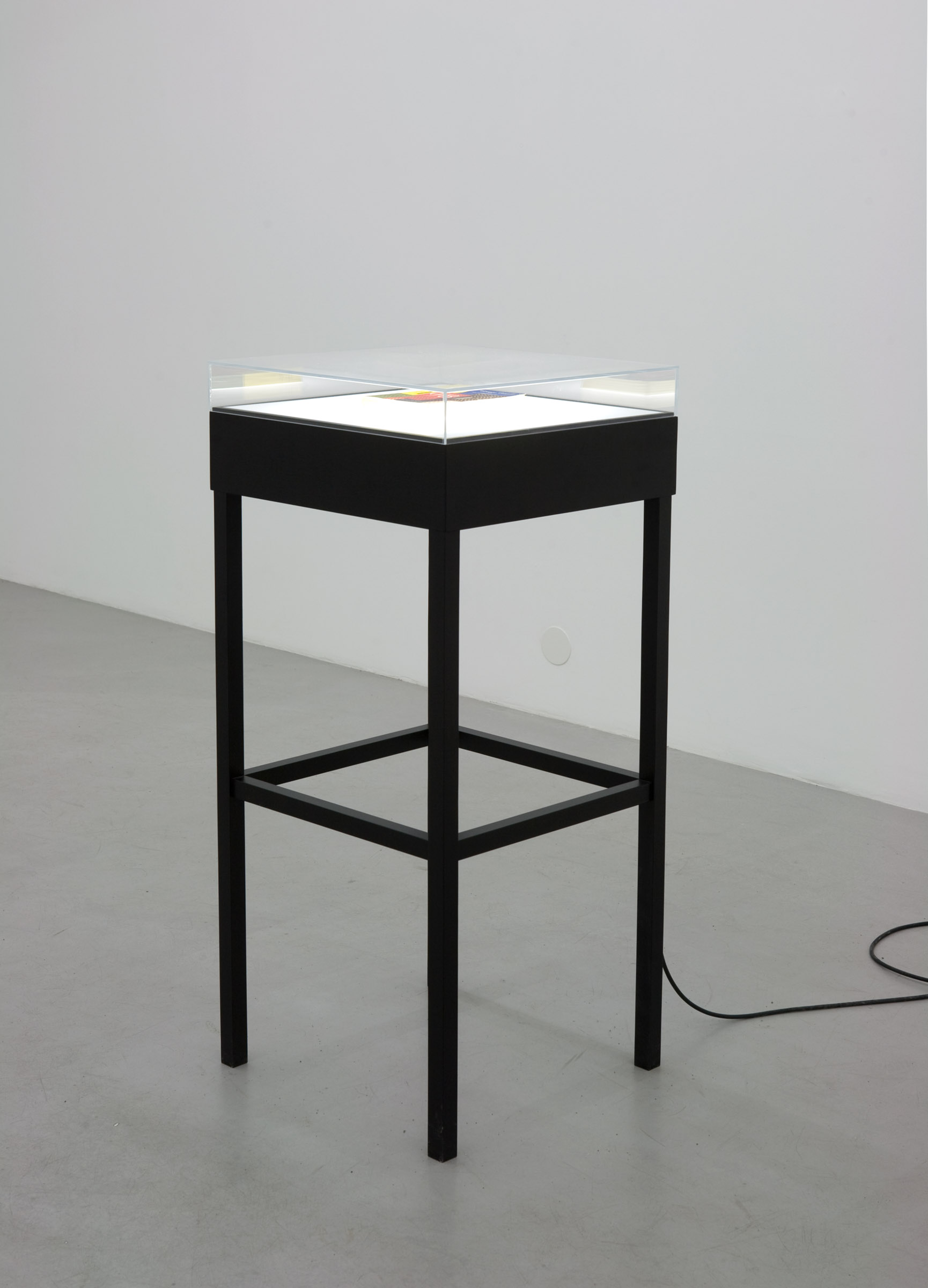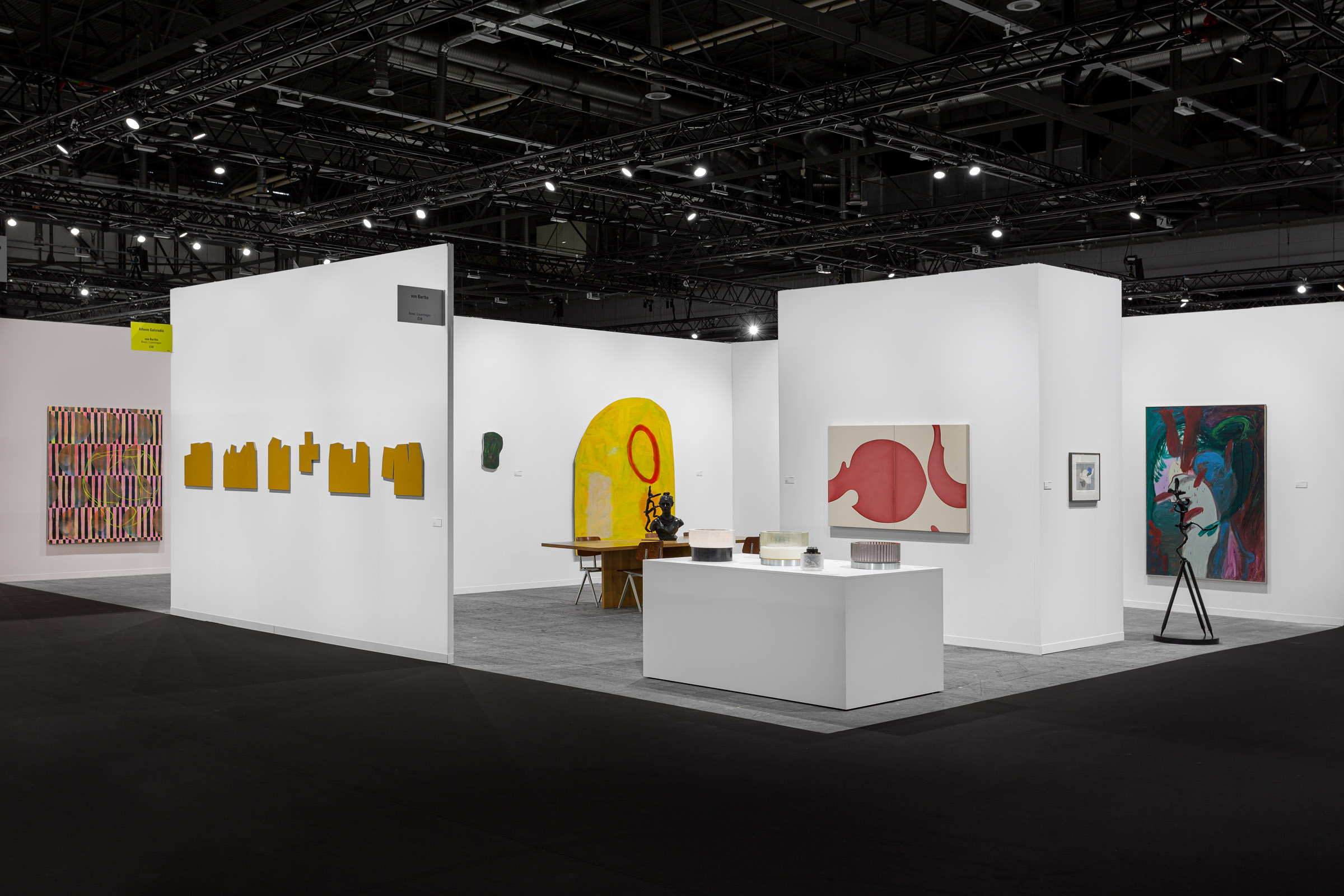A 5-minute introduction to Christian Andersson’s 1950 (1984)

Are we living in a fictional dystopia? The artist’s homage to George Orwell’s iconic novel asks tricky questions about our time
Standing in front of Christian Andersson’s work ‘1950 (1984)’ we are faced with a copy of the Swedish 1950 edition of the world-famous book by George Orwell. It’s presented under glass in a vitrine, resting on a lightbox. Its cover, a colourful graphic design by Olle Eksell, shows a painted illustration of an anonymous, blue-skied cityscape populated by identical skyscrapers, onto which the novel’s infamous slogans are written like neon chapter headings: ‘Freedom is Slavery’, ‘War is Peace’, ‘Ignorance is Strength’. Since 2017, sales of 1984 have steadily increased as phenomena such as public, 24-hour video surveillance, tracing apps and fake news give us reason to reflect on our relationship to society and government. With ‘1950 (1984)’ Andersson condenses past, present and perhaps even future views of these concepts – inviting us to consider how time can shape perception and point of view.
The artist does this by blurring the lines between reality and fiction because, upon closer inspection, the cover of the book – and, in fact, the entire book – proves to be somehow semi-transparent, with the light from underneath it pushing through its structure. It is, literally, as if the content of the book is leaking out, its fiction spreading into our reality. With this leakage Andersson takes us on a journey through time, or rather times. If culture can be used as a tool to define its time, here we have a filter of sorts, with light flowing through its layers of (fictional) time, projecting it onto our layers of (real) time. In this blending of times perception again becomes pertinent; We are invited to try to imagine how this fiction was, is, or could be perceived at various points in history, such as 1950, 1984, 2013 (when the artist made the work), 2020 – and even the year 2050, mentioned in Orwell’s appendix to 1984 as the time when Newspeak (the fictional language of Oceania) ‘was expected’ (!) to have superseded Oldspeak (Standard English, as we know it).
With subtle means Andersson is splitting the story of the story open, letting a parallel view pour out. He’s offering us an alternative version of 1984, both the novel and the year, illustrating how history is changing fiction which in turn affects reality, and vice versa.

1950 (1984), 2008
Paper, transparent film, paint, light box, vitrine
112.6 x 50 x 50 cm





